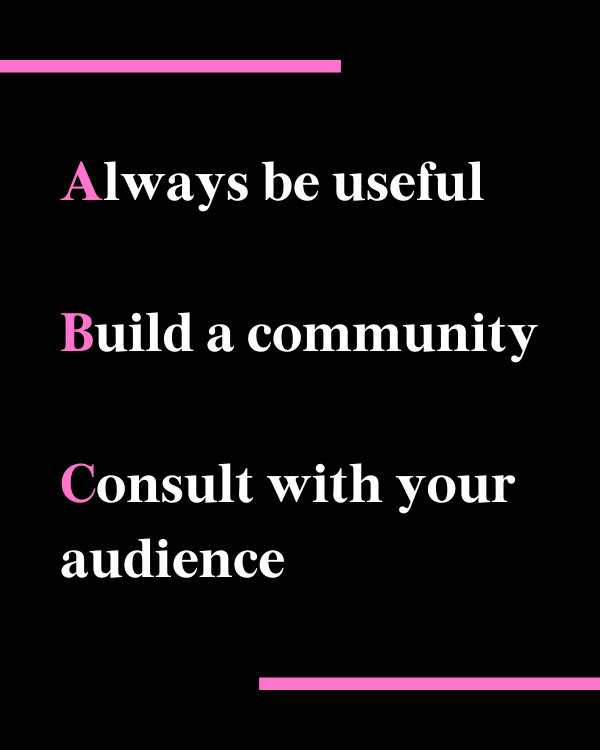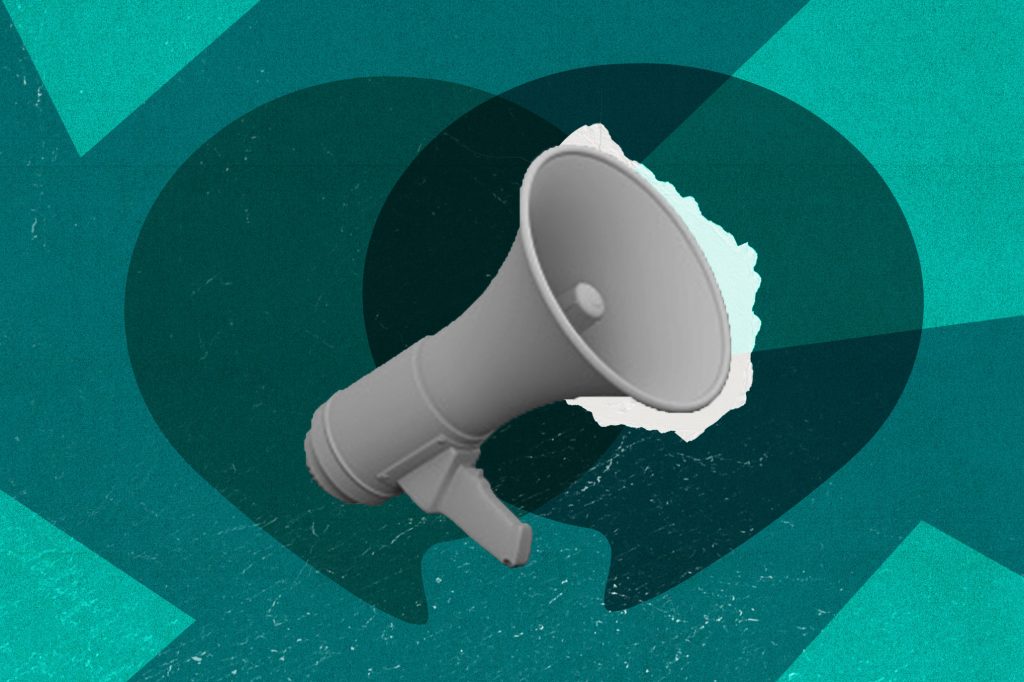From cost center to revenue-generator: An ABC guide for your comms operation
Turning your brand's insights into a paid membership program
Uzra Khan is Vice President of Editorial and Audience Growth at Long Dash. She formerly worked at Reuters and the MIT Media Lab. She has contributed to Foreign Policy and Quartz.
Communications leaders at brands have a difficult daily question to answer:
What should we be talking about?
This question can feel easy to answer on a surface level. I mean, there’s so much to talk about! AI, the state of the economy, climate change, internet regulation, all the great work your brand is doing on a day-to-day basis, I can go on and on.
But if you’re trying to answer this question strategically, you run into a set of gnarlier questions that are harder to answer: Why should we be talking about this? Who is the audience? What do I want them to do with this information? Am I adding value? These questions can be particularly difficult to carve out time to answer in the rush of the day-to-day operations of communications: We need a new article every week! We need to send out our weekly newsletter! We haven’t posted to LinkedIn in days! Our web traffic keeps dipping!
These daily pressures are now compounded by financial pressures. Amidst layoffs, rising costs, and an unpredictable economy, communications leaders are also under pressure to demonstrate that what they’re putting out there is actually delivering results and not a drain on a brand’s bottom line. They are facing tough questions from CEOs: Are those five likes and shares on that social media post worth all this effort? Is our publishing actually getting us new customers?
Our ABC formula is a guide to how to build a strategic communications operation that delivers and demonstrates value—and has the potential to bring in revenue. Putting a price tag on your communications products overnight is never going to be effective—you need to do the upfront legwork to ensure you’ve built something that is worth paying for.

Always be useful
This is simple to say and harder to do. But in a digital era with avalanches of information, endless newsfeeds, overflowing inboxes, and never enough time, we all crave utility. If you’re reading this, I’m sure you have had the experience of hitting “skip” or “mute” on an ad while you’re watching or listening to something. People do not need another brand telling them how great they are; they need valuable information. And when brands think like journalists, they are equipped to deliver that value.
What does this look like in practice? It requires knowing your strengths and your place in the market. If you’re not a breaking news organization, don’t try to break the news! Try instead to contribute timely insights that are in line with your expertise and therefore make sense coming from you: for example, The Marshall Project interviewing people with criminal convictions for their take on the Trump trial, or Intact’s guide to an outcome-based approach to consulting, or Hubspot sharing the top types of AI-generated content in marketing, or McKinsey’s new book about CEO excellence.
Being useful also means focusing on quality, not quantity. Fewer, more targeted publishing efforts that meet audiences where they are are far more valuable than a nonstop publishing engine with lackluster points of view and distribution tactics. Meet audiences with useful insights on the platforms where they’re already spending time—like their email inboxes. That’s a better use of time than publishing more stuff on a website that your target audiences may never find.
Build a community
So how do you know if you’ve been useful? Communications teams we work with often struggle with figuring out how to measure results. How many page views is a good number of page views? Is it a problem if search traffic is dipping? Are people actually reading these posts?
The best way to know is to allow for opportunities for your audiences to tell you. And I don’t just mean through a once-every-year survey (though those can be useful too). I mean through an ongoing relationship with your audience—the bedrock of what it means for a brand to have a community.
Ask your audiences questions often: Was this useful? What would have made it more useful? Do you have questions I can answer? Ask them also for their reactions to your ideas and to share their experiences. Let them learn from one another as much as they are learning from you. These are the markers that distinguish a community from an audience—brands like Cisco, Salesforce, and Lululemon have all realized the power in developing and maintaining them.
People can be dismissive of this approach to measuring success. We’ll get 3-4 responses at best. How does this tell us anything? To that, I counter, it tells you more than an arbitrary click number tells you—clicks don’t tell you whether someone actually finished reading or how they felt about what you shared. Qualitative feedback is a valuable complement to the quantitative numbers that your team is probably already gathering. The quality of comments and the dialogue you garner is a goldmine of information about your audiences and their needs.
And, probably most importantly, this approach allows your audiences to feel heard and seen. A study we fielded in 2022 showed that consumers have a growing need to weigh in, to exercise their voices, and to feel heard. This is particularly true of younger generations.
Consult with your audience
So you’ve been useful, you’ve built a community. What next? Having a captive audience is extraordinarily valuable to your brand, whether or not you choose to monetize your insights. It is a built-in feedback generator, a funnel for other revenue-generating parts of your business, and a buffer against external volatility.
Now onto the monetization question. We know that people are willing to pay for information that is useful. The Substack-era has proven that: for the cost of a cup of coffee per month, audiences are willing to pay for a slice of trusted insight, surprise, and delight in their email inboxes. Cutting-edge insights command much higher price tags, like those we see on products like Politico Pro, Axios Pro, and on the high end, Gartner.
If you’re useful and have built a community, you’re staring at a big revenue opportunity. We recommend consulting with your audience directly to figure out how to capitalize on it effectively. Here are a few ways to do so:
- Invite a group of highly engaged members to offer input on what they’d be willing to pay for. When you do so, tell them why they have been chosen to do so, and go beyond platitudes like “highly valued member of our audience.” For example, “As a senior communications executive, you’re exactly the kind of person we believe we’re best equipped to serve, and we’d love your input as we build even better ways to do so.” Spend time with them and get into details like what they’re looking for, what else they read, what formats they prefer, what they currently pay for, and appetite for different price points.
- Run a private beta membership program, before you take it public. Start small with a manageable inaugural group of highly engaged members so you can figure out what is mutually most effective to maintain and scale. Solicit feedback from this group regularly and as part of the membership product itself; for example, ask them for what they’d like to see you cover next, share out their responses, and address their requests.
- Clearly define what’s in it for you, and what’s in it for them. For you, this is clear: beyond the money, you’re building a direct and ongoing feedback engine and a trove of valuable data. For them, this is not always clearly articulated, and you should try to define this in terms beyond the “things” you’re delivering. Think bigger than “report” or “podcast” or “events access”—what is the outcome you’re enabling? Are you helping your audience navigate their day-to-day communications? Are you helping their businesses stay equipped amid the oncoming technological tsunami? Remind them of this value proposition in every communications touchpoint.
- Be strategic about how your monetized insights engine fits with other revenue-generating parts of your business. If your core business is selling another set of products or services, ensure that this newly monetized membership program does not compete with it, but rather directly enhances it. Can it be an add-on product for high-value customers? Or a vehicle for discounts to the core products and services? This will ensure enthusiasm and buy-in from all parts of your organization.
Interested in getting started, and looking for more guidance? Get in touch with us. We’ve had a front-row seat to The Atlantic’s digital transformation and subscription strategy launch, and we have worked with dozens of clients on this ABC journey. We’d love to explore working with you.





